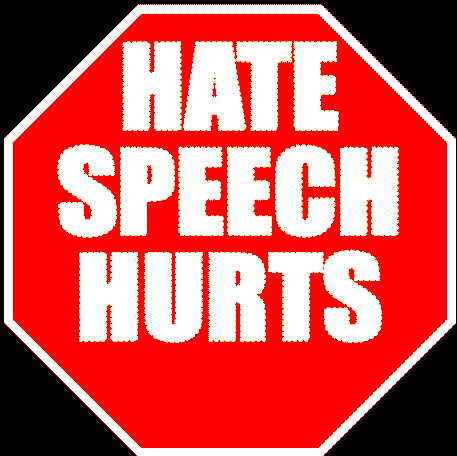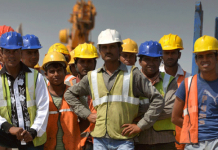This article is written by Vanya Verma from O.P. Jindal Global University. This article focuses upon hate speech, laws governing hate speech, and how to combat hate speech.
Table of Contents
Introduction
Online forums are frequently seen in isolation, although they are simply reflections of society. In recent years, polarising information and hateful material have grown on the Internet in India. Opinions that would previously have been suppressed for fear of societal repercussions have now found a safe haven on the internet. A wide range of radical statements can be found on the internet. Today’s social media is a beehive of toxic and vicious debates. Combating hate speech and fake news has become a major concern for governments around the world. But this isn’t just a technology problem; it’s a societal one as well.
In Christchurch, New Zealand, in 2019, a terrorist opened fire in two mosques, killing at least 49 worshippers and injuring dozens more. Following such terrorist incidents, a fresh debate erupted about how governments and civic society can combat hate speech on the internet. The perpetrator live-streamed the incident on Facebook. In fact, the entire incident seems to have been planned for the age of social media. Before it took place, a post on the anonymous message board 4chan, a particularly lawless forum that often features racist and extremist posts, seemed to preview the horror. The message connected users to a Facebook page that aired a live video of the attack and linked to an 87-page manifesto full of anti-immigrant and anti-Muslim views. The attack was also announced via Twitter posts. The video was eventually taken down by Facebook and Twitter, but not before it had been viewed by the majority of the people.
About hate speeches
The reality is that hate speech is not specified in any of the laws of the country; instead, only restrictions for utilising particular forms of speech and expressions are stated. Hate speech is defined as “an incitement to hatred particularly towards a group of persons characterised in terms of race, ethnicity, gender, sexual orientation, religious belief, and the like” in the Law Commission of India’s 267th Report.
To put it another way, hate speech is defined as “any written or spoken statement, sign, or visible depiction within a person’s hearing or sight with the intent to provoke fear or alarm, or incitement to violence.” Hate speech, according to the Blacks Law Dictionary, is “speech that has no other meaning than to convey hatred towards any group, such as a specific race, especially in circumstances when the communication is likely to cause violence.”
Hate speeches in India
In India, fake news and hate propaganda are mostly about a person’s caste, gender, or religion, all of which are sensitive themes for most of us. Furthermore, the regulations addressing these issues are insufficient and are dispersed throughout numerous acts and rules under the Indian Penal Code, the Information Technology Act, and the Criminal Procedure Code. The present legislation must be harmonised and unified. Moreover, there is a need to amend the draft intermediary guidelines rules to tackle modern forms of hate content that proliferate on the Internet.
In India, the propagation of rumours about child traffickers using the popular messaging network WhatsApp resulted in a rash of lynchings in rural areas in 2018. More recently, during the campaign for the Delhi legislative assembly elections, an official electoral rally used hate slogans to entice crowds. However, in the days after the demonstration, a young man turned these comments into reality by shooting demonstrators at Jamia Millia Islamia University, demonstrating once again how hate speech has serious effects.
The Shreya Singhal case (2015) provided instructions on how hate content should be regulated, and the government should follow this direction, in which users report hate content to an intermediary, and platforms subsequently remove it after the due procedure. As the current legislative method disregards due process, it is vulnerable to misuse by the government. While security is critical, privacy is a constitutionally protected right, and the government must strike a balance between the two moving ahead.
We have now reached a point where members of the ruling party are resorting to hate rhetoric in order to gain support. Hatred, anger, and lies are frequently used to manipulate people’s emotions and influence them. However, as we can see from these examples, such speech has and will have consequences. As a result, it is critical for the government to recognise the dangers of hate speech and to guarantee that appropriate regulations are in place to address the problem. Though the government’s suggested interim rules are a step in the right direction, there is still more to be desired in terms of a comprehensive framework to address the issue while protecting citizens’ rights.
When the right to freedom of speech and expression was first introduced in the Constituent Assembly, there were calls for restrictions, which led to the Constitution (First Amendment) Act of 1951 and the Constitution (Sixteenth Amendment) Act of 1963, which added various grounds for imposing restrictions under Article 19(2) of the Constitution.
Legislations governing hate speeches
Apart from the Constitution, there are other legislation and self-regulatory measures in place to prevent hate speech, such as:
- The Indian Penal Code, 1860: Section 124A; Section 153A; Section 153B; Section 153 C; Section 295A; Section 298; Section 505(1) and (2).
- The Code of Criminal Procedure, 1973: Section 95; Section 107; Section 144.
- The Representation of the People Act, 1951: Section 8; Section 123(3); 123(3A) and Section 125.
- The Protection of Civil Rights Act, 1955: Section 7
- The Religious Institutions (Prevention of Misuse) Act, 1988: Section 3(g)
- Cable Television Network Regulation Act of 1995: Sections 5 and 6 prohibit the transmission or retransmission of a programme via a cable network in violation of the authorised programme code or advertisement code. These codes are defined under Rules 6 and 7 of the Cable Television Network Rules of 1994, respectively.
- Cinematograph Act of 1952: Sections 4, 5B, and 7 authorise the Board of Film Certification to prohibit and control film screenings.
Though the above-mentioned statutes do not explicitly address concerns of hate speech, the Supreme Court has construed the Constitution in such a way that these provisions are limited to the reasonable constraints of Article 19(2) of the Constitution. As a result, in order to maintain peace and public order in our country, the definition of hate speech has been expanded. Despite the numerous provisions in our laws, opposing questions have been raised about them: first, they are insufficient, and second, they limit freedom of expression. Two different cases from the Hon’ble Supreme Court illustrate this confusing confutation-
- Pravasi Bhalai Sangathan v. Union of India (2014): In this case, the petitioners found the existing hate speech legislation to be insufficient and requested that the State should implement stricter regulations and take immediate action against those who promote hate speech. However, the Court stated that enforcing existing rules would significantly reduce the problem of hate speech. The Law Commission of India needed to take a closer look at the issue of hate speech. As a result, in March 2017, the Commission, after considering the laws and different statements on hate speech, submitted its Report No.267 to the Government of India for consideration.
- Union of India v. Subramaniam Swamy (2021): Arguments were made in this case about the reasonableness of the restrictions on free speech imposed by Sections 499 and 500 IPC in light of settled doctrine that says restrictions should be precisely tailored and not excessive, arbitrary, or disproportionate. Subramanian Swamy suggested that six provisions of the Indian Penal Code, 1860, should be declared unconstitutional for violating Article 19(1)(a) of the Constitution.
As a result, it is clear that there are mixed feelings in our society concerning the concept of hate speech, and the lack of a specific platform to apply it as ineffectual. The perpetrators get away with challenging the laws as being too restrictive, while the victims of hatred want tighter measures for their safety and prosperity.
Judicial interpretation on hate speeches
- In S. Rangarajan Etc vs. P. Jagjivan Ram (1989), the Court stated that freedom of expression cannot be suppressed unless the situation created is dangerous to the community/public interest and that this risk must not be remote, speculative, or improbable. With the expression in question, there should be a close and direct link.
- In Arup Bhuyan vs. State of Assam (2011), the Court ruled that single conduct could not be punished unless the perpetrator used violence or incited others to use violence.
- In Shreya Singhal v. Union of India (2015) concerns were raised about Section 66A of the Information Technology Act, 2000, which relates to the fundamental right of free speech and expression guaranteed by Article 19(1)(a) of the Constitution, in which the Court distinguished between discussion, advocacy, and incitement, holding that the first two were the essence of Article 19(1)(a) of the Constitution.
The judicial rulings show that India has a speech-protective system, which means that the words people choose to express themselves are critically heard and then reacted to if they violate public decency. Although the courts may be wary of imposing constraints on Article 19 because of the potential for it to be badly abused by the state. Despite countless precedents on the subject, identifying a certain sort of words or expressions that have the potential to incite violence in the country remains a difficult assignment.
Recent cases
Countries all across the world have begun to recognise the problem of hate speech and fake news and how it impacts society’s functioning. In this aspect, Germany and France have some of the strictest policies. In Germany, the NetzDG, or Network Enforcement Act, maintains strict prohibitions against hate speech, including the propagation of pro-Nazi ideology. It establishes rigorous takedown deadlines but also allows for extensions in the event that further facts are required to assess the accuracy of the material. The majority of complaints received in Germany, similar to India, were connected to hate speech or political extremism.
In France, on the other hand, digital platforms are required to reveal the name of the author and the amount paid by the author in the case that content is sponsored. In terms of fake news, France has legislation from 1881 that sets the criteria for determining whether the news is fraudulent and being broadcast on a big scale intentionally. In this case, a legal injunction is issued to prevent the spread of such information. These countries are among the most forward-thinking when it comes to content control. This level of efficiency must be achieved while protecting the freedoms of all parties involved, from individuals to social media businesses. It is evident that the ramifications of the narrative that develops on internet platforms have real-life consequences more frequently than not.
There have been numerous instances of hate speech not only in India but around the world, with Facebook, the social media giant, revealing alarming statistics in its Transparency Report, revealing that it took down 3 million hateful posts from its platform, and YouTube, which allows free sharing of video content on its site, removing 25,000 videos in a single month.
In 2017, the #notinmyname (Not In My Name) protest was launched on social media, with major public figures supporting the response to many cases of mob lynching and religious violence. The Supreme Court requested a response from the Uttar Pradesh government in 2018 regarding the hate speech case against Yogi Adityanath, who gave a speech as a BJP lawmaker from Gorakhpur in 2007 that sparked riots.
When JNU student leader Umar Khalid was attacked in 2018, former Jammu and Kashmir Chief Minister Omar Abdullah described the attacks as a hate campaign carried out through social and mainstream media. In 2018, Tamil Nadu police detained a folk musician for singing a song critical of Prime Minister Narendra Modi at a protest assembly.
Republic TV was fined £20,000 for running a program on its UK station that implied that all Pakistanis, including “their scientists, physicians, leaders, legislators, and even their sportspeople,” were terrorists. Ofcom discovered that during a 35-minute conversation between Goswami and guests, Goswami referred to Pakistani scientists as “thieves” and Pakistanis as “beggars.” The conversation began with India’s recent Chandrayaan-2 space mission but quickly went to the country’s supposed supremacy over its neighbour and old foe Pakistan. According to the commission, the show violated UK broadcasting regulations because it “spread, incited, promoted, and justified such prejudice for Pakistani people among viewers.”
Sudarshan TV aired the controversial episode ‘Bindas Bol,’ which was aimed at “exposing” the “infiltration of Muslims in Indian bureaucracy.” The Supreme Court banned the remaining episodes of a show about Muslims “infiltrating” the central government’s civil service from airing on a private television station. The apex Court called the show “insidious” and “rabid.”
During the ongoing Lok Sabha election campaigning, the Supreme Court gave the Election Commission of India (ECI) just 24 hours to clarify its lawyer’s claims that the poll authority is mainly impotent and toothless to act against religious and hate speeches by candidates. The government (MeitY) has drafted the Information Technology [Intermediaries Guidelines (Amendment) Rules] 2018, which spells out the vigilance that intermediaries must have when carrying out their responsibilities. Similarly, there have been countless incidents of hate speech in which some people have gotten justice while others remain unsolved.
Way forward
As people being victims of hate speech are afraid to visit public venues or engage in debates. This results in a shift in their behaviour; hate speech’s intangible impacts on people are the most insidious and detrimental to their right to live in dignity.
As a result, the following actions should be taken to address such issues:
- The most effective technique to lessen animosity is through education. Our educational system has a significant role in creating and comprehending compassion for others.
- Not only the government but also private citizens must participate in awareness campaigns and activities aimed at maintaining amicable relationships.
- Though there are numerous laws prohibiting hate speech, tougher penalties are required since religious sentiments and beliefs are extremely valuable to individuals.
- The fight against hate speech is not a one-sided battle. It should be considered on a larger scale, such as in the United Nations. This threat should be addressed by every responsible country, a regional body, and other international and regional actors.
- Hate speech cases can be dealt with through alternative dispute resolution, which suggests a change away from the lengthy judicial procedures and toward the settlement of disputes between parties by negotiation, mediation, arbitration, and/or conciliation.
Conclusion
Subjects like hate speech become a complex issue to deal with in a country like India, where there is a large population of people from many origins and cultures, and it is difficult to distinguish between free and hate speech. When restricting talks, several issues must be addressed, including the number of strong opinions, offensiveness to certain communities, and the impact on the ideals of dignity, liberty, and equality. There are laws against such crimes, but there is still a lot of work to be done. For a flourishing India, we must all collaborate and communicate effectively in order to make our country a safe and healthy place to live.
References
Students of Lawsikho courses regularly produce writing assignments and work on practical exercises as a part of their coursework and develop themselves in real-life practical skills.
LawSikho has created a telegram group for exchanging legal knowledge, referrals, and various opportunities. You can click on this link and join:
 Serato DJ Crack 2025Serato DJ PRO Crack
Serato DJ Crack 2025Serato DJ PRO Crack










 Allow notifications
Allow notifications



